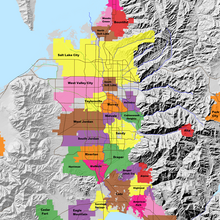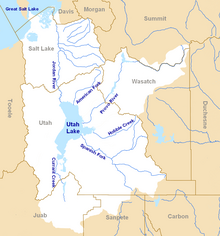|
|
General: DIA MUNDIAL DEL OVNI-24 DE JUNIO-DIA DE SAN JUAN EL BAUTISTA-JUAN/PUERTA/MARCO
Elegir otro panel de mensajes |
|
|
DIA DE SAN JUAN EL BAUTISTA, EL 24 DE JUNIO
24 de Junio – Primer avistamiento oficial de Ovnis en Washington
 Kenneth A. Arnold (29 de marzo de 1915 – 16 de enero de 1984) fue un piloto privado de Boise, Idaho que contempló el que está considerado como el primer avistamiento de un ovni en los Estados Unidos, a pesar de haber sido precedido por otros incidentes similares aunque menos divulgados. El 24 de junio de 1947 Arnold aseguró haber visto 9 objetos inusuales volando en cadena cerca de Mount Rainier, Washington, mientras se encontraba buscando una aeronave militar extraviada a bordo de un CallAir A-2. Describió los objetos como sumamente brillantes por el reflejo de la luz solar, con un vuelo errático (“como la cola de una cometa china”) y con una “tremenda velocidad”. La historia de Arnold fue ampliamente divulgada por Associated Press y por otras agencias de noticias. Kenneth A. Arnold (29 de marzo de 1915 – 16 de enero de 1984) fue un piloto privado de Boise, Idaho que contempló el que está considerado como el primer avistamiento de un ovni en los Estados Unidos, a pesar de haber sido precedido por otros incidentes similares aunque menos divulgados. El 24 de junio de 1947 Arnold aseguró haber visto 9 objetos inusuales volando en cadena cerca de Mount Rainier, Washington, mientras se encontraba buscando una aeronave militar extraviada a bordo de un CallAir A-2. Describió los objetos como sumamente brillantes por el reflejo de la luz solar, con un vuelo errático (“como la cola de una cometa china”) y con una “tremenda velocidad”. La historia de Arnold fue ampliamente divulgada por Associated Press y por otras agencias de noticias.
Los reportes de prensa y los orígenes del término “platillo volador”
Después de su avistamiento Arnold aterrizó en Yakima, Washington, donde hizo un informe de rutina al representativo de la Administración de Aeronáutica Civil. En su camino de regreso a Boise se detuvo en Pendleton, Oregon, donde repitió su historia a un grupo de personas en el que se encontraba un reportero de periódico. Varios años después, Arnold afirmó haber dicho al reportero que los objetos “volaban erráticamente, como un plato lanzado al agua”, y así fue como nació el término “platillo volador”. Otro término común para describir lo que Arnold vio es “discos voladores”. Arnold se sintió malinterpretado ya que su descripción se refería más al movimiento de los objetos que a su forma.
Sin embargo, la verdadera descripción de Arnold acerca de la forma de los objetos es más complicada. Después de su experiencia, él describió a los objetos como delgados y planos, redondeados en el frente pero cortados por atrás, más o menos como un plato o un disco. En una entrevista de radio que tuvo lugar dos días después del avistamiento, los describió como “parecidos a un pastel de pai que es cortado a la mitad con una especie de triángulo en la parte trasera”. Ese mismo día Arnold fue citado en la prensa estadounidense de la siguiente manera: los objetos “tenían forma de platillos y eran tan delgados que difícilmente podía verlos”. El siguiente día el diario de Portland Oregon escribía la cita de Arnold: “tenían forma de medias lunas, ovalados en la parte frontal y convexos en la trasera. … se veían como grandes discos planos”.
La teoría mas convincente es que eran Horten Ho 229. cogidos a a los alemanes , hacia 2 años del fin de la guerra. Lo que vio Arnold fue una flotilla de naves aéreas construidas en secreto con los planos robados a los alemanes tras su rendición. También se estaban probando los VOUGHT V-173, aviones con forma circular.
https://www.comodoro.gov.ar/efemerides/2013/06/24/24-de-junio-primer-avistamiento-oficial-de-ovnis-en-washington/
|
|
https://www.muyhistoria.es/.../icuando-se-produjo-el-primer-avistamiento-ovni
El 24 de junio de 1947, Kenneth Arnold realizó el primer avistamiento moderno de un objeto volador no identificado, al menos tal y como lo entienden los ...
www.legadocosmico.com/articulo.php?page=1947-y-los-ovnis
¿El fenómeno ovni es la prueba de que inteligencias cósmicas visitan la Tierra? ¿Están ... 24 de junio de 1947: Kenneth Arnold, a bordo de su avioneta privada, ...
https://tn.com.ar/.../en-1947-un-cordobes-le-revelo-la-verdad-la-casa-blanca-sobre-los...
8 dic. 2016 - El 24 de junio de 1947 el piloto de avión Kenneth Arnold dijo que vio nueve OVNIs durante uno de sus vuelos. Menos de un mes después la ...
https://www.lanacion.com.ar/1965147-la-desopilante-carta-que-un-cordobes-le-envio-...
7 dic. 2016 - UU. en 1947 para explicar el fenómeno OVNI - El 24 de junio de ese año se produjo un famoso avistamiento OVNI; un oriundo de Villa María ...
www.telam.com.ar/.../193364-encuentro-sobre-el-fenomeno-ovni-a-70-anos-de-la-ap...
24 jun. 2017 - Encuentro sobre el fenómeno OVNI a 70 años de la aparición del ... Arnold en una entrevista el 24 de junio de 1947, cuando dijo haber visto ...
|
|
|
|
|
|
|
|

Jordan River (Utah)
From Wikipedia, the free encyclopedia
The Jordan River, in the state of Utah, United States, is a river about 51 miles (82 km) long. Regulated by pumps at its headwaters at Utah Lake, it flows northward through the Salt Lake Valley and empties into the Great Salt Lake. Four of Utah's six largest cities border the river: Salt Lake City, West Valley City, West Jordan, and Sandy. More than a million people live in the Jordan Subbasin, part of the Jordan River watershed that lies within Salt Lake and Utah counties. During the Pleistocene, the area was part of Lake Bonneville.
Members of the Desert Archaic Culture were the earliest known inhabitants of the region; an archaeological site found along the river dates back 3,000 years. Mormon pioneers led by Brigham Young were the first European American settlers, arriving in July 1847 and establishing farms and settlements along the river and its tributaries. The growing population, needing water for drinking, irrigation, and industrial use in an arid climate, dug ditches and canals, built dams, and installed pumps to create a highly regulated river.
Although the Jordan was originally a cold-water fishery with 13 native species, including Bonneville cutthroat trout, it has become a warm-water fishery where the common carp is most abundant. It was heavily polluted for many years by raw sewage, agricultural runoff, and mining wastes. In the 1960s, sewage treatment removed many pollutants. In the 21st century, pollution is further limited by the Clean Water Act, and, in some cases, the Superfund program. Once the home of bighorn sheep and beaver, the contemporary river is frequented by raccoons, red foxes, and domestic pets. It is an important avian resource, as are the Great Salt Lake and Utah Lake, visited by more than 200 bird species.
Big Cottonwood, Little Cottonwood, Red Butte, Mill, Parley's, and City creeks, as well as smaller streams like Willow Creek at Draper, Utah, flow through the sub-basin. The Jordan River Parkway along the river includes natural areas, botanical gardens, golf courses, and a 40-mile (64 km) bicycle and pedestrian trail, completed in 2017.[6]
The Jordan River is Utah Lake's only outflow. It originates at the northern end of the lake between the cities of Lehi and Saratoga Springs. It then meanders north through the north end of Utah Valley for approximately 8 miles (13 km) until it passes through a gorge in the Traverse Mountains, known as the Jordan Narrows. The Utah National Guard base at Camp Williams lies on the western side of the river through much of the Jordan Narrows.[7][8] The Turner Dam, located 41.8 miles (67.3 km) from the river's mouth (or at river mile 41.8) and within the boundaries of the Jordan Narrows, is the first of two dams of the Jordan River. Turner Dam diverts the water to the right or easterly into the East Jordan Canal and to the left or westerly toward the Utah and Salt Lake Canal. Two pumping stations situated next to Turner Dam divert water to the west into the Provo Reservoir Canal, Utah Lake Distribution Canal, and Jacob-Welby Canal. The Provo Reservoir Canal runs north through Salt Lake County, Jacob-Welby runs south through Utah County. The Utah Lake Distribution Canal runs both north and south, eventually leading back into Utah Lake.[9] Outside the narrows, the river reaches the second dam, known as Joint Dam, which is 39.9 miles (64.2 km) from the river's mouth. Joint Dam diverts water to the east for the Jordan and Salt Lake City Canal and to the west for the South Jordan Canal.[10][11][12]

Map of the Salt Lake Valley
The river then flows through the middle of the Salt Lake Valley, initially moving through the city of Bluffdale and then forming the border between the cities of Riverton and Draper.[7] The river then enters the city of South Jordan where it merges with Midas Creek from the west. Upon leaving South Jordan, the river forms the border between the cities of West Jordan on the west and Sandy and Midvale on the east. From the west, Bingham Creek enters West Jordan. Dry Creek, an eastern tributary, combines with the main river in Sandy. The river then forms the border between the cities of Taylorsville and West Valley City on the west and Murray and South Salt Lake on the east. The river flows underneath Interstate 215 in Murray. Little and Big Cottonwood Creeks enter from the east in Murray, 21.7 miles (34.9 km) and 20.6 miles (33.2 km) from the mouth respectively. Mill Creek enters on the east in South Salt Lake, 17.3 miles (27.8 km) from the mouth. The river runs through the middle of Salt Lake City, where the river travels underneath Interstate 80 a mile west of downtown Salt Lake City and again underneath Interstate 215 in the northern portion of Salt Lake City. Interstate 15 parallels the river's eastern flank throughout Salt Lake County. At 16 miles (26 km) from the mouth, the river enters the Surplus Canal channel. The Jordan River physically diverts from the Surplus Canal through four gates and heads north with the Surplus Canal heading northwest. Parley's, Emigration, and Red Butte Creeks converge from the east through an underground pipe, 14.2 miles (22.9 km) from the mouth.[7] City Creek also enters via an underground pipe, 11.5 miles (18.5 km) from the river's mouth. The length of the river and the elevation of its mouth varies year to year depending on the fluctuations of the Great Salt Lake caused by weather conditions. The lake has an average elevation of 4,200 feet (1,300 m) which can deviate by 10 feet (3.0 m).[3] The Jordan River then continues for 9 to 12 miles (14 to 19 km) with Salt Lake County on the west and North Salt Lake and Davis County on the east until it empties into the Great Salt Lake.[7][8][11]
Discharge[edit]
The United States Geological Survey maintains a stream gauge in Salt Lake City that shows annual runoff from the period 1980–2003 is just over 150,000 acre-feet (190,000,000 m3) per year or 100 percent of the total 800,000 acre-feet (990,000,000 m3) of water entering the Jordan River from all sources. The Surplus Canal carries almost 60 percent of the water into the Great Salt Lake, with various irrigation canals responsible for the rest. The amount of water entering the Jordan River from Utah Lake is just over 400,000 acre-feet (490,000,000 m3) per year. Inflow from the 11 largest streams feeding the Jordan River, sewage treatment plants, and groundwater each account for approximately 15 percent of water entering the river.[13]
Watershed[edit]

Map of the entire Jordan River Basin
|
|
|
 Primer Primer
 Anterior
171 a 185 de 215
Siguiente Anterior
171 a 185 de 215
Siguiente Último
Último
|
|
| |
|
|
©2024 - Gabitos - Todos los derechos reservados | |
|
|

